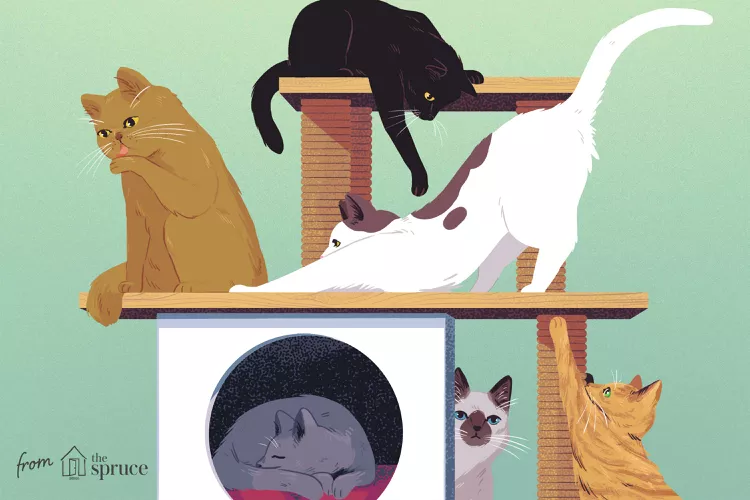How Can I Tell the Sex of a Cat?

Determining the sex of your new cat isn't always an easy feat. The traits of a male cat compared to a female cat aren't always evident to new cat owners, and it's even more difficult to determine the sex of a kitten or a neutered male.
There are, however, telltale signs and behaviors that can make it easier to determine a cat's sex, and read on to discover the best ways to determine the sex of your cat.
Sexing Kittens
For those adopting a kitten, chances are the new pet is only a few weeks old. Newborn and tiny kittens are so immature that it's nearly impossible to tell their sex. Once they're six or eight weeks old, however, their genitalia becomes more visually obvious. The penis, however, is not normally visible in male cats, and it's unlikely that the owner will be able to feel or see the scrotum. Thus, apparent lack of a penis or testes is not an indication that a kitten is female.
As a rule of thumb, breeders use "punctuation marks" to identify the sex of younger cats or neutered cats. To do this, raise the pet's tail gently; start by petting gently and try scratching the cat's lower back as he or she may raise the tail automatically as purring begins.
- Female cats: When looking at a female cat's genital area, the space just under her tail, it will look like an upside down exclamation point (¡) with the long slit of the vaginal area below the anus. The anus and vagina are typically only about half an inch apart. In kittens, the anus and vagina may both look like dots, and they may be even closer together.
- Male cats: The male cat has a larger separation between the anus and the penis, with the testicles in the middle. Both of these openings look more like dots, circles, or a colon (:) than like slits or lines.
Sexing Grown Cats
For those adopting a grown cat, use the same sexing technique as is used for kittens; this usually works well for both neutered and "whole" cats. If a pet is not spayed or neutered, however, it'll be easier determining their sex based both on appearance and on behavior. Once cats are spayed or neutered there is no obvious behavior difference between the genders; apparent differences are likely related to individual cat temperaments.
- "Whole" cats: Tomcats that have not been neutered have readily evident testicles and a broader jowl. They also have unique behaviors that begin as they reach maturity. Un-neutered male cats tend to be more active and aggressive. They're also more likely to mark their territory through urine spraying than neutered toms. A female cat who hasn't been spayed will go into heat roughly every two weeks when in season. During this time her behavior can change drastically as she attempts to find a mate. During this time, un-spayed female cats are typically more demanding of attention and vocally louder.
- Spayed and neutered cats: Spayed female cats will still show the upside down "!," but if she is adopted as an adult, hormonal tests can be used to determine if she is spayed. With female cats, it's important to find out if they've been spayed or not before having an unplanned litter. Most neutered male cats will still show the vestigial remnants of a testicle sac, and the anus and penis will still be relatively close together. Neutered cats will not display typical male or female behaviors. Neutered males are generally more passive than "whole" males, and spayed females do not go into heat.
Sex-Based Differences in Appearance
While all cats look very similar, some colors and physical indications are unique to a particular gender.
Specifically, it is extremely rare for a male cat to have tri-colored calico or orange-and-black tortoiseshell fur. For those with a calico or tortie cat, chances are very good that the pet is a female.
It is uncommon for a female cat to have orange or ginger-colored (or orange-and-white striped) fur. For those with an orange cat, there's a good chance that it is a male.
A cat that has given birth is far more likely to have visually obvious nipples (though both males and females do have nipples).
Females going through heat may have a small amount of mucoid vaginal discharge, and a pregnant cat will have a low-hanging, distended belly.